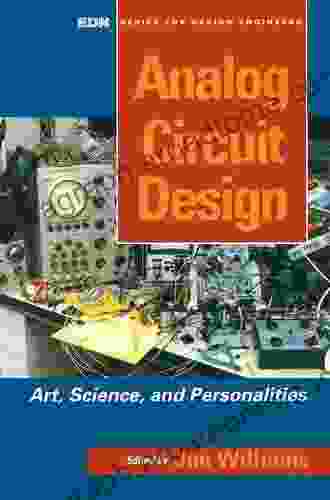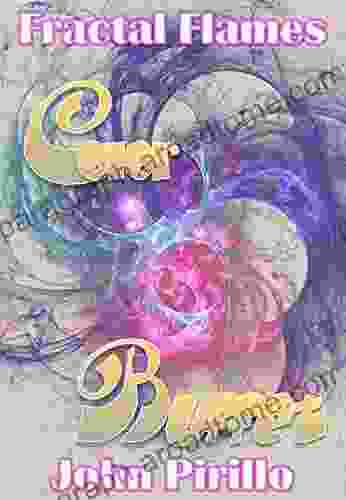Art, Science, and Personalities: The Ultimate Guide for Design Engineers

Design engineers are often seen as the bridge between the worlds of art and science. They must be able to understand the technical aspects of engineering while also having a creative eye for design. This can be a difficult balance to strike, but it is essential for success in the field.
In Art, Science, and Personalities: The Ultimate Guide for Design Engineers, author [Author's Name] provides a comprehensive overview of the key concepts that design engineers need to know. The book covers a wide range of topics, including:
4.7 out of 5
| Language | : | English |
| File size | : | 12235 KB |
| Text-to-Speech | : | Enabled |
| Screen Reader | : | Supported |
| Enhanced typesetting | : | Enabled |
| Print length | : | 409 pages |
- The creative process
- Problem solving
- Communication
- Teamwork
- Ethics
The book is written in a clear and concise style, and it is packed with practical advice and examples. Each chapter includes exercises and activities that readers can use to apply the concepts they have learned. The book is essential reading for any aspiring or practicing design engineer.
The Creative Process
The creative process is a complex and often mysterious one. However, there are some key steps that can help you to get started:
- Define the problem. What are you trying to achieve?
- Gather information. What do you know about the problem? What are the constraints?
- Generate ideas. Brainstorm as many ideas as possible, no matter how crazy they may seem.
- Evaluate ideas. Which ideas are the most feasible? Which ideas are the most creative?
- Develop a solution. Combine the best elements of your ideas to create a solution that meets the requirements of the problem.
The creative process is not always linear. You may need to go back and forth between steps several times before you find a solution that you are satisfied with. However, by following these steps, you can increase the chances of success.
Problem Solving
Problem solving is a critical skill for design engineers. Every day, you will be faced with challenges that need to be solved. The following steps can help you to approach problem solving in a systematic and effective way:
- Understand the problem. What is the problem that you are trying to solve? What are the constraints?
- Gather information. What do you know about the problem? What resources are available to you?
- Generate solutions. Brainstorm as many solutions as possible, no matter how crazy they may seem.
- Evaluate solutions. Which solutions are the most feasible? Which solutions are the most effective?
- Implement the solution. Put the solution into practice and monitor its effectiveness.
Problem solving is not always easy. However, by following these steps, you can increase the chances of finding a solution that works.
Communication
Communication is essential for design engineers. You need to be able to communicate your ideas to clients, colleagues, and other stakeholders. The following tips can help you to become a more effective communicator:
- Be clear and concise. When you are communicating your ideas, make sure that you are clear and concise. Avoid using jargon or technical terms that your audience may not understand.
- Use visuals. Visuals can be a great way to communicate complex ideas. Use charts, graphs, and diagrams to help your audience understand your points.
- Be persuasive. When you are presenting your ideas, be persuasive. Use data and evidence to support your claims. Be prepared to answer questions and defend your ideas.
- Be a good listener. It is important to be a good listener when you are communicating. Pay attention to what others have to say and try to understand their perspectives.
Communication is a skill that takes time and practice to develop. However, by following these tips, you can become a more effective communicator and improve your chances of success.
Teamwork
Teamwork is essential for design engineers. You will often work on projects with other engineers, designers, and other professionals. The following tips can help you to be a more effective team player:
- Be a team player. Be willing to work with others and share your ideas. Be supportive of your teammates and help them to succeed.
- Communicate effectively. Communication is essential for teamwork. Make sure that you are clear and concise when communicating with your teammates.
- Be a problem solver. teamwork is not always easy. There will be times when you disagree with your teammates or when you encounter challenges. Be a problem solver and work with your teammates to find solutions.
- Be a leader. When necessary, be a leader and take charge of the team. Help your teammates to stay on track and achieve the team's goals.
Teamwork is a valuable skill for design engineers. By following these tips, you can become a more effective team player and improve your chances of success.
Ethics
Ethics is an important consideration for design engineers. You have a responsibility to use your skills and knowledge for good. The following tips can help you to make ethical decisions:
- Consider the consequences of your actions. Before you make a decision, consider the consequences of your actions. How will your decision affect your clients, your colleagues, and the public?
- Be honest and transparent. Be honest and transparent with your clients, your colleagues, and the public. Avoid misleading or deceptive practices.
- Respect the rights of others. Respect the rights of others, including their intellectual property rights.
- Be accountable for your actions. Be accountable for your actions and take responsibility for your mistakes.
Ethics is a complex issue, but it is important for design engineers to be aware of their ethical responsibilities. By following these tips, you can make ethical decisions and improve your chances of success.
Art, Science, and Personalities: The Ultimate Guide for Design Engineers is an essential resource for any aspiring or practicing design engineer. The book provides a comprehensive overview of the key concepts that design engineers need to know, including the creative process, problem solving, communication, teamwork, and ethics. The book is written in a clear and concise style, and it is packed with practical advice and examples. Each chapter includes exercises and activities that readers can use to apply the concepts they have learned. The book is essential reading for any aspiring or practicing design engineer.
4.7 out of 5
| Language | : | English |
| File size | : | 12235 KB |
| Text-to-Speech | : | Enabled |
| Screen Reader | : | Supported |
| Enhanced typesetting | : | Enabled |
| Print length | : | 409 pages |
Do you want to contribute by writing guest posts on this blog?
Please contact us and send us a resume of previous articles that you have written.
 Book
Book Novel
Novel Page
Page Chapter
Chapter Text
Text Story
Story Genre
Genre Reader
Reader Library
Library Paperback
Paperback E-book
E-book Magazine
Magazine Newspaper
Newspaper Paragraph
Paragraph Sentence
Sentence Bookmark
Bookmark Shelf
Shelf Glossary
Glossary Bibliography
Bibliography Foreword
Foreword Preface
Preface Synopsis
Synopsis Annotation
Annotation Footnote
Footnote Manuscript
Manuscript Scroll
Scroll Codex
Codex Tome
Tome Bestseller
Bestseller Classics
Classics Library card
Library card Narrative
Narrative Biography
Biography Autobiography
Autobiography Memoir
Memoir Reference
Reference Encyclopedia
Encyclopedia Patrick Mcnamara
Patrick Mcnamara John Gravett
John Gravett Tom Hindes
Tom Hindes Jessica Kleiman
Jessica Kleiman Wendy Cohan
Wendy Cohan Jim Belcher
Jim Belcher Kevin Leman
Kevin Leman Peter Hames
Peter Hames John Loretto
John Loretto Terrance Hutchinson
Terrance Hutchinson Mary Prince
Mary Prince Maddie Alexander
Maddie Alexander Thurston Jones
Thurston Jones Tammy Kennington
Tammy Kennington Jose Prendes
Jose Prendes Pukumuku
Pukumuku Jeremy Gruber
Jeremy Gruber Jisun Sunny Fisher
Jisun Sunny Fisher Johan Hellsten
Johan Hellsten John Locke
John Locke
Light bulbAdvertise smarter! Our strategic ad space ensures maximum exposure. Reserve your spot today!
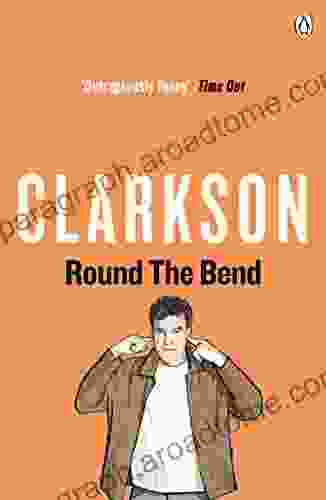
 Isaiah PriceRound the Bend: A Journey to the Edge of Madness by Jeremy Clarkson: A Book...
Isaiah PriceRound the Bend: A Journey to the Edge of Madness by Jeremy Clarkson: A Book...
 Lawrence BellTo What End by Joel Rhodes: A Literary Masterpiece of Intrigue and Redemption
Lawrence BellTo What End by Joel Rhodes: A Literary Masterpiece of Intrigue and Redemption Shane BlairFollow ·8.3k
Shane BlairFollow ·8.3k Andy ColeFollow ·10k
Andy ColeFollow ·10k Galen PowellFollow ·2.2k
Galen PowellFollow ·2.2k Bob CooperFollow ·10.3k
Bob CooperFollow ·10.3k Kirk HayesFollow ·3.3k
Kirk HayesFollow ·3.3k Roland HayesFollow ·10.1k
Roland HayesFollow ·10.1k Daniel KnightFollow ·9.3k
Daniel KnightFollow ·9.3k Everett BellFollow ·14.8k
Everett BellFollow ·14.8k

 Julio Cortázar
Julio CortázarAn Illustrated Encyclopedia Of Live Concerts And...
Immerse yourself in the...

 Edgar Cox
Edgar CoxNon Physically Assaultive Attachment Based Chronic Covert...
What is Covert...
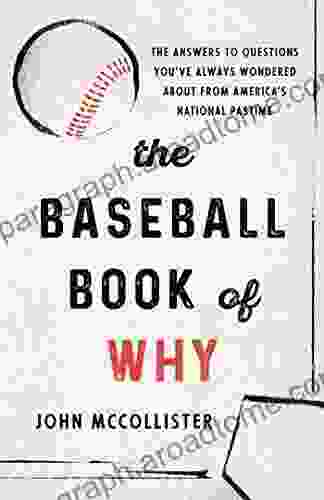
 Robert Reed
Robert ReedThe Baseball of Why: Unraveling the Intricacies of...
Step up to the plate and...
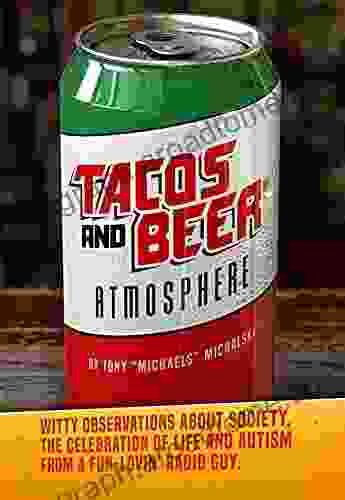
 Aldous Huxley
Aldous HuxleyTacos and Beer: An Atmosphere of Flavorful Delights
In the realm of culinary adventures,...

 Stan Ward
Stan WardUnlock the Secrets of the Aramaic Jesus: Revelations of a...
Journey Back to the Roots of...
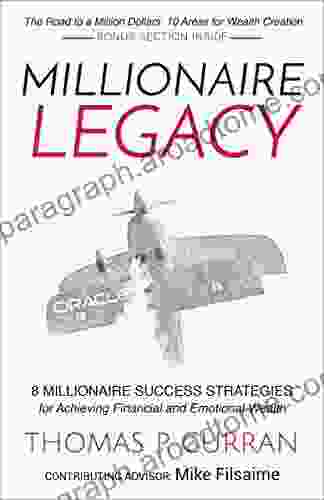
 Vincent Mitchell
Vincent MitchellMillionaire Success Strategies: Your Blueprint for...
Unlock the...
4.7 out of 5
| Language | : | English |
| File size | : | 12235 KB |
| Text-to-Speech | : | Enabled |
| Screen Reader | : | Supported |
| Enhanced typesetting | : | Enabled |
| Print length | : | 409 pages |


